Identify The Surgical Instruments Quiz
(511).jpg)
Surgical instruments are the backbone of every successful medical procedure. From scalpels to forceps, each tool has a specific role and purpose, requiring precise knowledge to use effectively. This Surgical Instruments Quiz is designed to test your understanding of various surgical instruments, their names, and their applications in real-life medical settings.
If you are a medical student, a healthcare professional, or someone keen to learn about these tools, this OR instruments quiz offers a structured approach to assess and deepen your knowledge. Let's understand the fascinating world of surgical instruments and challenge your expertise in this critical area of Read morehealthcare.
Surgical Instruments Quiz Questions and Answers
- 1.
Identify this surgical instrument.
- A.
Bulldogs
- B.
DeBakey forceps
- C.
Kelly
- D.
Adson
Correct Answer
B. DeBakey forcepsExplanation
DeBakey forceps are a specialized type of atraumatic tissue forceps commonly used in various surgical procedures. They are characterized by their long, slender design and fine, delicate tips. The tips are typically serrated with a smooth or "atraumatic" surface to minimize damage to delicate tissues and blood vessel.These forceps are particularly useful in cardiovascular, vascular, and plastic surgery, where precise handling of delicate structures is crucial. They are often employed for grasping, holding, and manipulating tissues, vessels, and sutures in confined spaces or deep within surgical fields. The fine tips and atraumatic design of DeBakey forceps make them ideal for procedures requiring minimal tissue trauma and precise manipulation.Rate this question:
-
- 2.
Identify this surgical instrument.
- A.
Army Navy
- B.
Omni-Tract
- C.
Deaver
- D.
Weitlaner retractor
Correct Answer
D. Weitlaner retractorExplanation
The Weitlaner retractor is a self-retaining surgical instrument used to hold back tissue and expose the surgical field. It features a ratchet mechanism that locks the arms in place, providing a continuous and stable retraction. The blades of the Weitlaner are typically curved and have sharp or blunt teeth, allowing for a firm grip on the tissues. This retractor is commonly used in various surgical specialties, including general surgery, orthopedic surgery, and neurosurgery, to retract superficial tissues and provide better visualization of the underlying structures. Its self-retaining design frees up the surgeon's hands for other tasks, making it a valuable tool for maintaining a clear operative field.Rate this question:
-
- 3.
Identify this surgical instrument.
- A.
Endo GIA
- B.
Yankauer
- C.
Endo cutter
- D.
Endo catch
Correct Answer
A. Endo GIAExplanation
The Endo GIA™ stapler is an advanced surgical stapling device used for minimally invasive procedures. It is designed to cut and seal tissues simultaneously, providing a secure and efficient method for tissue division and anastomosis (connecting two tubular structures). The Endo GIA™ features a curved or straight shaft with a disposable loading unit containing two rows of staples and a knife blade.
This instrument is commonly used in laparoscopic and thoracoscopic surgeries, such as gastrointestinal, thoracic, and gynecological procedures. Its ability to staple and cut tissues through small incisions reduces the need for open surgery, leading to less pain, faster recovery, and minimal scarring for patients. The Endo GIA™ stapler has revolutionized minimally invasive surgery by offering a reliable and versatile tool for tissue management.Rate this question:
-
- 4.
Identify this surgical instrument.
- A.
Castroviejo needle holder
- B.
Schnidt
- C.
Straight Mayo
- D.
Metzenbaum
Correct Answer
A. Castroviejo needle holderExplanation
The Castroviejo needle holder is a delicate and precise instrument primarily used in microsurgery. It is characterized by its small size, fine tips, and a spring-loaded mechanism that allows for controlled gripping and manipulation of needles. The jaws of the Castroviejo needle holder are typically short and have fine serrations to securely hold the needle without causing damage. This instrument is essential in ophthalmic, plastic, and reconstructive surgeries, where delicate suturing is required. It allows surgeons to place sutures accurately in confined spaces and handle fine needles with precision. The spring-loaded mechanism reduces hand fatigue during long and intricate procedures, enabling surgeons to maintain a steady and controlled grip on the needle throughout the operation.Rate this question:
-
- 5.
Identify this surgical instrument.
- A.
Weitlaner retractor
- B.
Senn retractor
- C.
Allis
- D.
Babcock
Correct Answer
B. Senn retractorExplanation
The Senn retractor is a small, hand-held retractor commonly used in various surgical procedures. It features a double-ended design with two different blades. One end typically has a broad, flat blade, while the other end has a narrower, curved blade. Both blades are smooth and blunt, designed to retract superficial tissues gently without causing damage.Senn retractors are frequently employed in minor surgical procedures, wound closure, and plastic surgery. Their small size and versatility make them ideal for retracting skin, fat, and muscle layers to improve visualization of the surgical site. The smooth blades minimize trauma to the tissues, making them suitable for delicate procedures where tissue preservation is important.Rate this question:
-
- 6.
Identify this surgical instrument.
- A.
Bookwalter Retractor
- B.
Finochietto Rib Spreader
- C.
Weitlaner Retractor
- D.
Sweetheart
Correct Answer
B. Finochietto Rib SpreaderExplanation
The Finochietto Rib Spreader is a specialized surgical instrument specifically designed for thoracic surgery. Its primary function is to retract and separate the ribs, providing surgeons with adequate exposure to the thoracic cavity. This instrument is crucial for procedures involving the lungs, heart, and other organs within the chest.
The Finochietto Rib Spreader typically consists of two curved blades with blunt tips and a ratchet mechanism that allows for gradual and controlled spreading of the ribs.
The blades are inserted between the ribs, and the ratchet is used to widen the space, creating a clear operative field. The instrument's design minimizes trauma to the ribs and surrounding tissues, ensuring patient safety and facilitating a smooth surgical procedure.
Rate this question:
-
- 7.
Identify this surgical instrument.
- A.
Ferris Smith
- B.
Balfour
- C.
Volkmann
- D.
Gelpi retractor
Correct Answer
D. Gelpi retractorExplanation
The Gelpi retractor is a self-retaining instrument designed to provide effective retraction of tissues during surgical procedures. It typically features two sharp, curved blades that engage the tissue and a ratchet mechanism that locks the blades in place, maintaining a constant retraction force. This allows surgeons to keep the surgical site open and accessible without needing to manually hold the retractor. Gelpi retractors are commonly employed in various surgical specialties, including general surgery, orthopedic surgery, and neurosurgery. They are particularly useful in procedures requiring deep or narrow incisions, where maintaining adequate exposure can be challenging. The sharp blades provide a secure grip on the tissues, while the self-retaining mechanism frees up the surgeon's hands for other tasks.Rate this question:
-
- 8.
Identify this surgical instrument.
- A.
Balfour retractor
- B.
Gelpi
- C.
Omni
- D.
Bookwalter
Correct Answer
A. Balfour retractorExplanation
The Balfour retractor is a large, self-retaining instrument specifically designed for abdominal surgery. It provides a wide and stable retraction of the abdominal wall, allowing surgeons to access the abdominal cavity and its organs. The Balfour retractor consists of two main components: a frame and a set of blades. The frame is typically placed over the incision, and the blades are attached to the frame and positioned to retract the tissues.
The blades of the Balfour retractor come in various sizes and shapes to accommodate different surgical needs. They can be sharp or blunt, curved or straight, and can be adjusted to provide the desired level of retraction. The self-retaining design of the Balfour retractor ensures a continuous and stable retraction, freeing up the surgeon's hands for other tasks.Rate this question:
-
- 9.
Identify this surgical instrument.
- A.
Gelpi retractor
- B.
Bookwalter
- C.
Senn retractor
- D.
Volkmann retractor
Correct Answer
D. Volkmann retractorExplanation
The Volkmann rake retractor is a hand-held instrument used to retract tissues during surgical procedures. It features a handle with a set of sharp, prong-like teeth that firmly grasp and hold back tissues. The teeth can be curved or straight, and their number varies depending on the size and design of the retractor.Volkmann retractors are commonly used in orthopedic and spine surgeries to retract muscles and expose bones and joints. The sharp teeth provide a secure grip on the tissues, allowing for effective retraction and maintaining a clear surgical field. These retractors are particularly useful in procedures involving deep or narrow incisions, where access and visualization can be challenging.Rate this question:
-
- 10.
Identify this surgical instrument.
- A.
Straight Mayo
- B.
Stevens Tenotomy scissors
- C.
Metzenbaum
- D.
Iris
Correct Answer
B. Stevens Tenotomy scissorsExplanation
Stevens tenotomy scissors are delicate surgical scissors characterized by their fine, pointed blades and short, slender handles. The blades are typically curved or angled, allowing for precise cutting and dissection of delicate tissues. These scissors are commonly used in ophthalmic, plastic, and hand surgeries, where precise and controlled cutting is essential.The fine tips of Stevens tenotomy scissors enable surgeons to make intricate incisions and dissect delicate structures with minimal trauma. They are often used for procedures involving tendons, ligaments, and other delicate tissues. The small size and maneuverability of these scissors make them ideal for working in confined spaces or delicate surgical fields.Rate this question:
-
- 11.
Identify this surgical instrument.
- A.
Potts Smith Scissors
- B.
Iris
- C.
Tenotomy
- D.
Metzenbaum
Correct Answer
A. Potts Smith ScissorsExplanation
Potts-Smith scissors are specialized surgical scissors designed for delicate vascular and cardiovascular procedures. They feature long, slender shanks and short, fine blades with either straight or curved tips. The blades are typically angled to facilitate precise cutting and dissection of blood vessels and other delicate tissues.These scissors are commonly used in vascular surgery, cardiac surgery, and neurosurgery, where precise and controlled cutting of vessels and tissues is crucial. The long shanks allow surgeons to reach deep into surgical fields, while the short blades provide enhanced control and maneuverability. The angled blades facilitate precise cutting and minimize the risk of damaging surrounding tissues.Rate this question:
-
- 12.
Identify this surgical instrument.
- A.
Babcock
- B.
Kelly
- C.
Kocher artery forceps
- D.
Schnidt
Correct Answer
C. Kocher artery forcepsExplanation
Kocher artery forceps are a type of surgical clamp characterized by their strong, toothed jaws and a distinctive interlocking mechanism. The jaws are typically curved and have sharp teeth that securely grasp and hold tissues, preventing slippage. The interlocking mechanism ensures a firm grip on the tissue, even with significant tension.These forceps are commonly used in general surgery, orthopedic surgery, and other specialties to clamp blood vessels, tissues, and other structures. The strong grip and interlocking mechanism make them ideal for controlling bleeding and preventing tissue retraction during surgical procedures. Kocher artery forceps are particularly useful in procedures involving thick or dense tissues, where a secure grip is essential.Rate this question:
-
- 13.
Identify this surgical instrument.
- A.
Schnidt
- B.
Satinsky clamp
- C.
Forester
- D.
Penetrating towel clip
Correct Answer
B. Satinsky clampExplanation
The Satinsky clamp is a specialized vascular clamp specifically designed for atraumatic occlusion of blood vessels. It features curved jaws with a smooth or atraumatic surface to minimize damage to the delicate vessel walls. The clamp's design allows for partial or complete occlusion of the vessel, controlling blood flow during vascular procedures.Satinsky clamps are commonly used in cardiovascular surgery, vascular surgery, and other specialties involving blood vessel manipulation. They are particularly useful in procedures such as bypass grafting, aneurysm repair, and arteriovenous fistula creation. The atraumatic design of the Satinsky clamp helps preserve the integrity of the blood vessel, reducing the risk of complications such as thrombosis (blood clot formation) or intimal damage (injury to the inner lining of the vessel).Rate this question:
-
- 14.
Identify this surgical instrument.
- A.
No. 10 Blade
- B.
No. 11 Blade
- C.
No. 15 Blade
- D.
No. 2 Blade
Correct Answer
A. No. 10 BladeExplanation
The No. 10 Blade is a versatile scalpel blade commonly used in general surgery. It is characterized by its curved cutting edge and a rounded tip, making it suitable for a variety of incisions. The curved shape allows for precise and controlled cuts, particularly in curved or irregular anatomical areas.This blade is often used for making longer incisions in the skin and subcutaneous tissues, as well as for dissecting through muscle and fascia. The rounded tip helps prevent accidental punctures of underlying organs or vessels. The No. 10 blade is a staple in the operating room, providing surgeons with a reliable and adaptable tool for various surgical procedures.Rate this question:
-
- 15.
Identify this surgical instrument.
- A.
No. 10 Blade
- B.
No. 11 Blade
- C.
No. 15 Blade
- D.
No. 12 Blade
Correct Answer
B. No. 11 BladeExplanation
The No. 11 Blade is a distinctive scalpel blade known for its pointed tip and straight cutting edge. This design makes it ideal for precise and delicate incisions, particularly in situations where piercing or stabbing motions are required. The sharp point allows for accurate entry into tissues, while the straight edge enables clean and controlled cuts.This blade is frequently used in surgical specialties such as ophthalmology, plastic surgery, and dermatology. Its applications include making small incisions for biopsies, creating precise incisions in delicate tissues, and performing procedures that require fine dissection. The No. 11 blade's sharp point and straight edge make it a valuable tool for surgeons who need to perform intricate and accurate incisions with minimal tissue trauma.Rate this question:
-
Quiz Review Timeline +
Our quizzes are rigorously reviewed, monitored and continuously updated by our expert board to maintain accuracy, relevance, and timeliness.
-
Current Version
-
Jan 08, 2025Quiz Edited by
ProProfs Editorial Team
Expert Reviewed by
Farah Naz -
Mar 25, 2013Quiz Created by
MRCSrevise
 Back to top
Back to top



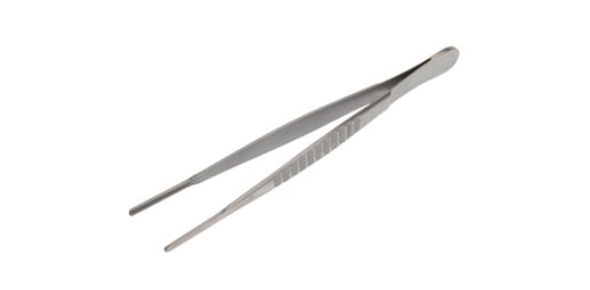
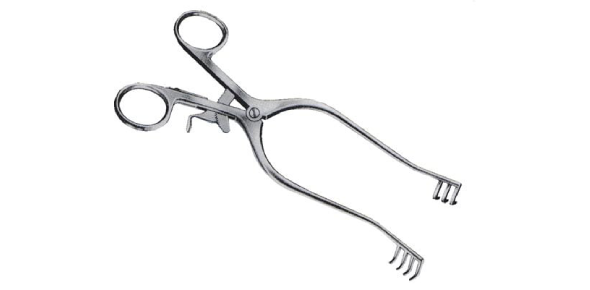
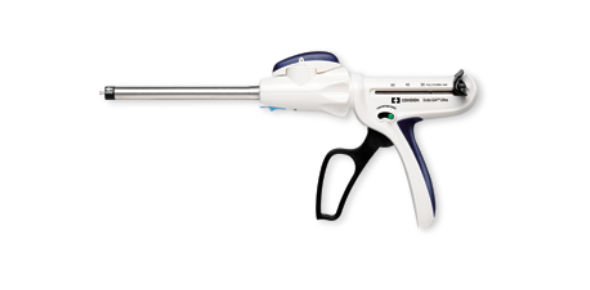
.webp)
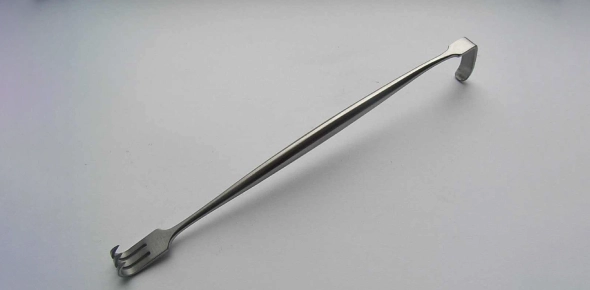
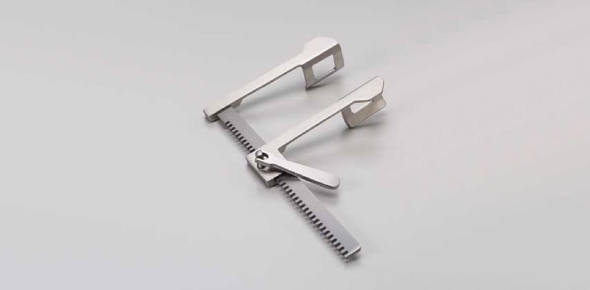
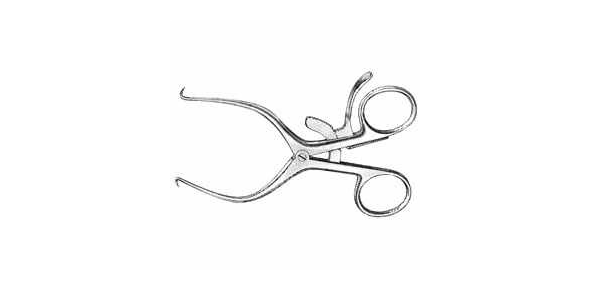
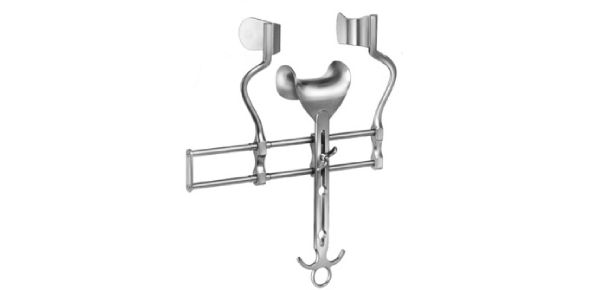
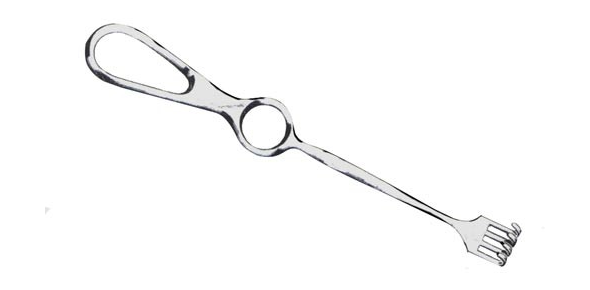
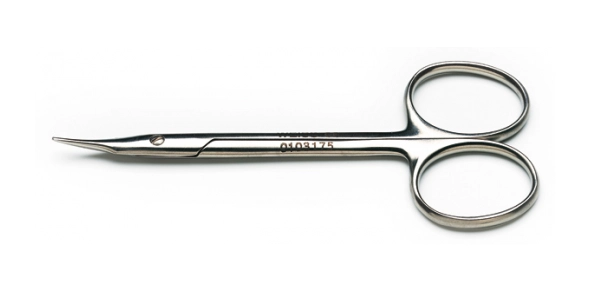
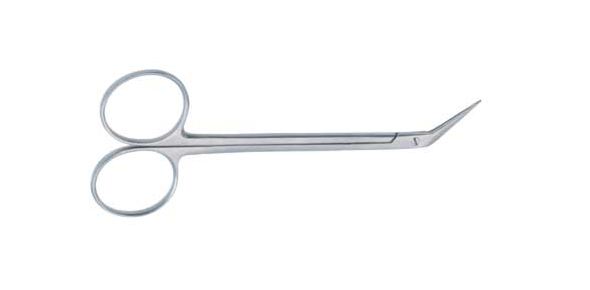

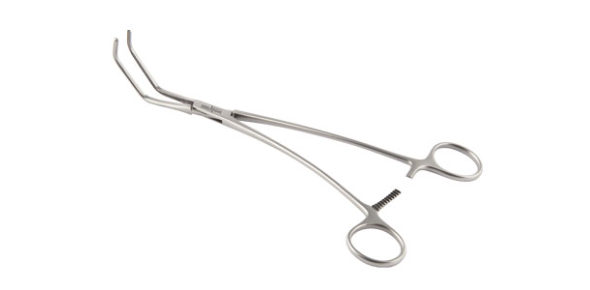
.webp)
.webp)